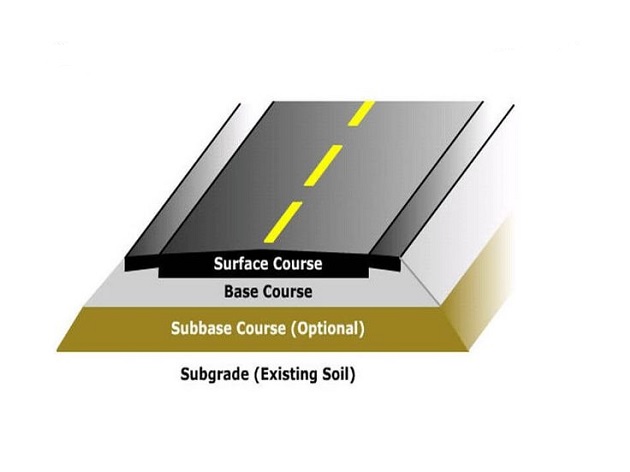Geometric design of roads
Geometric design of roads is a crucial aspect of highway engineering that involves the layout and configuration of a road to ensure safe and efficient transportation. It encompasses various elements, such as alignment, cross-section, sight distance, and grading. Here are the key components of the geometric design of roads:
1. Alignment:
– Horizontal Alignment: The horizontal alignment refers to the left-to-right layout of the road, including curves and straight sections. Engineers design the horizontal alignment to provide smooth and safe vehicle travel. This involves determining the radius of curves, super-elevation (banking of curves), and transitions between straight and curved sections.
– Vertical Alignment: The vertical alignment involves the up-and-down profile of the road. It includes grades (slopes), crests (high points), and sag curves (low points). The goal is to ensure safe and comfortable driving, especially in hilly terrain.
2. Cross-Section:
Cross-section design defines the shape and dimensions of the road, including the number of lanes, lane width, shoulder width, median, and roadside clear zones. It aims to accommodate the anticipated traffic volume, speed, and vehicle types.
3. Sight Distance:
– Sight distance is a critical factor in road design. It ensures that drivers have a clear view of the road ahead to spot potential hazards and react in time. Types of sight distance include stopping sight distance (SSD) and passing sight distance (PSD).
4. Grading:
– Grading refers to the slope or incline of the road surface. Proper grading is essential to manage water drainage and prevent standing water on the road, which can lead to hydroplaning and accidents. It also impacts vehicle fuel efficiency.
5. Superelevation:
– Superelevation, also known as banking, involves tilting the road surface on curves to counteract centrifugal forces and help vehicles navigate curves safely and comfortably.
6. Cross-Slopes:
– Cross-slopes are the slopes across the road, from the centerline to the edges. They help with water drainage and provide a stable surface for vehicles.
7. Lane Width and Shoulders:
– Lane width and shoulder design are important for accommodating different vehicle types, providing safe passing zones, and allowing room for emergency stopping or maneuvering.
8. Median Design:
– Medians are central dividers between opposing traffic lanes. Their design can vary from narrow raised medians to wide grassy ones. Medians enhance safety by preventing head-on collisions and supporting U-turns.
9. Clear Zones:
– Clear zones are areas adjacent to the road that should be free from obstacles, like trees, utility poles, and buildings. This helps minimize the severity of accidents and provides a buffer for vehicles that veer off the road.
10. Roadside Features:
– Roadside features include guardrails, barriers, signage, and lighting, which are essential for road safety and guidance.
The geometric design of roads requires consideration of various factors, including traffic volume, speed, topography, environmental impacts, and available right-of-way. Engineers must balance safety, functionality, and cost-effectiveness to create road designs that meet the needs of the traveling public while minimizing potential hazards. Additionally, adherence to design standards and regulations is crucial to ensure the quality and safety of road infrastructure.


